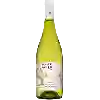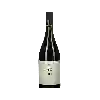
Winery Paris SeductionMedium Sweet Gers
This wine generally goes well with
The Medium Sweet Gers of the Winery Paris Seduction is in the top 10 of wines of Gers.
Details and technical informations about Winery Paris Seduction's Medium Sweet Gers.
Discover the grape variety: Muscadoule
This direct-producing hybrid is the result of an interspecific cross between Villard blanc and Muscat de Hambourg, obtained in 1937 by Galibert Alfred and Coulondre Eric. Almost no longer multiplied, it is now clearly on the verge of extinction.
Last vintages of this wine
The best vintages of Medium Sweet Gers from Winery Paris Seduction are 2017, 2016, 2019, 2018
Informations about the Winery Paris Seduction
The Winery Paris Seduction is one of of the world's greatest estates. It offers 6 wines for sale in the of Gers to come and discover on site or to buy online.
The wine region of Gers
The wine region of Gers is located in the region of Comté Tolosan of Vin de Pays of France. Wineries and vineyards like the Domaine de Gensac or the Domaine Francois Dulac produce mainly wines white, red and pink. The most planted grape varieties in the region of Gers are Cabernet-Sauvignon, Tannat and Colombard, they are then used in wines in blends or as a single variety. On the nose of Gers often reveals types of flavors of honey, earth or tree fruit and sometimes also flavors of tropical fruit, green apple or cheese.
The wine region of Comté Tolosan
Comte Tolosan is a PGI title that covers wines produced in a large area of Southwestern France. The PGI basin encompasses 12 administrative dePartments and is home to a wide range of appellations d'origine contrôlée (AOC) such as Jurançon, Cahors and Armagnac. The IGP label provides a geographical classification for wines that are not classified for AOC level appellations due to Grape variety or winemaking style. The region is part of the Aquitaine basin - the plains that lie between the Pyrenees, the Massif Central and the Atlantic Ocean to the west.
The word of the wine: Aqueous
Said of a diluted wine for which one has the impression that water has been added.









